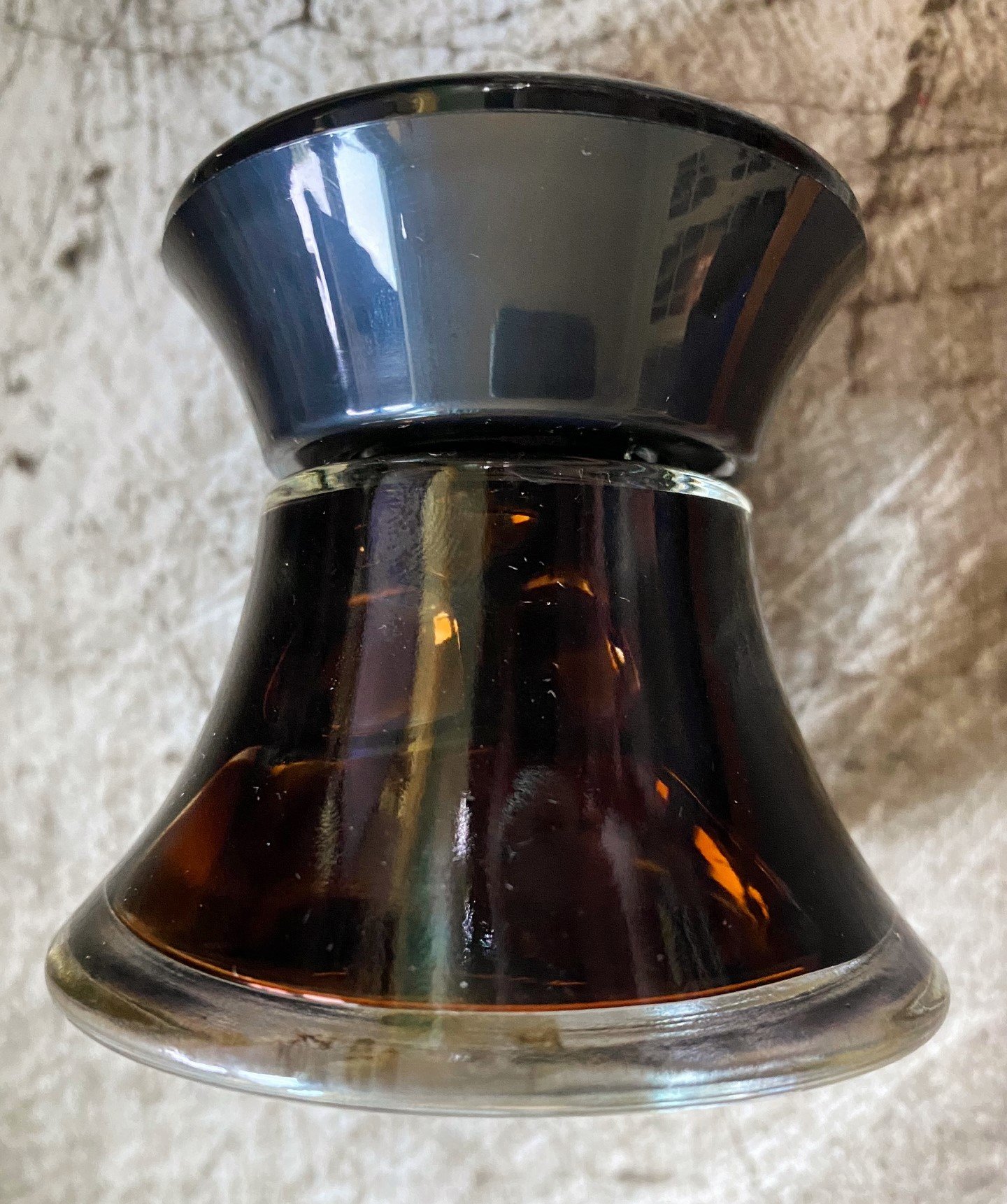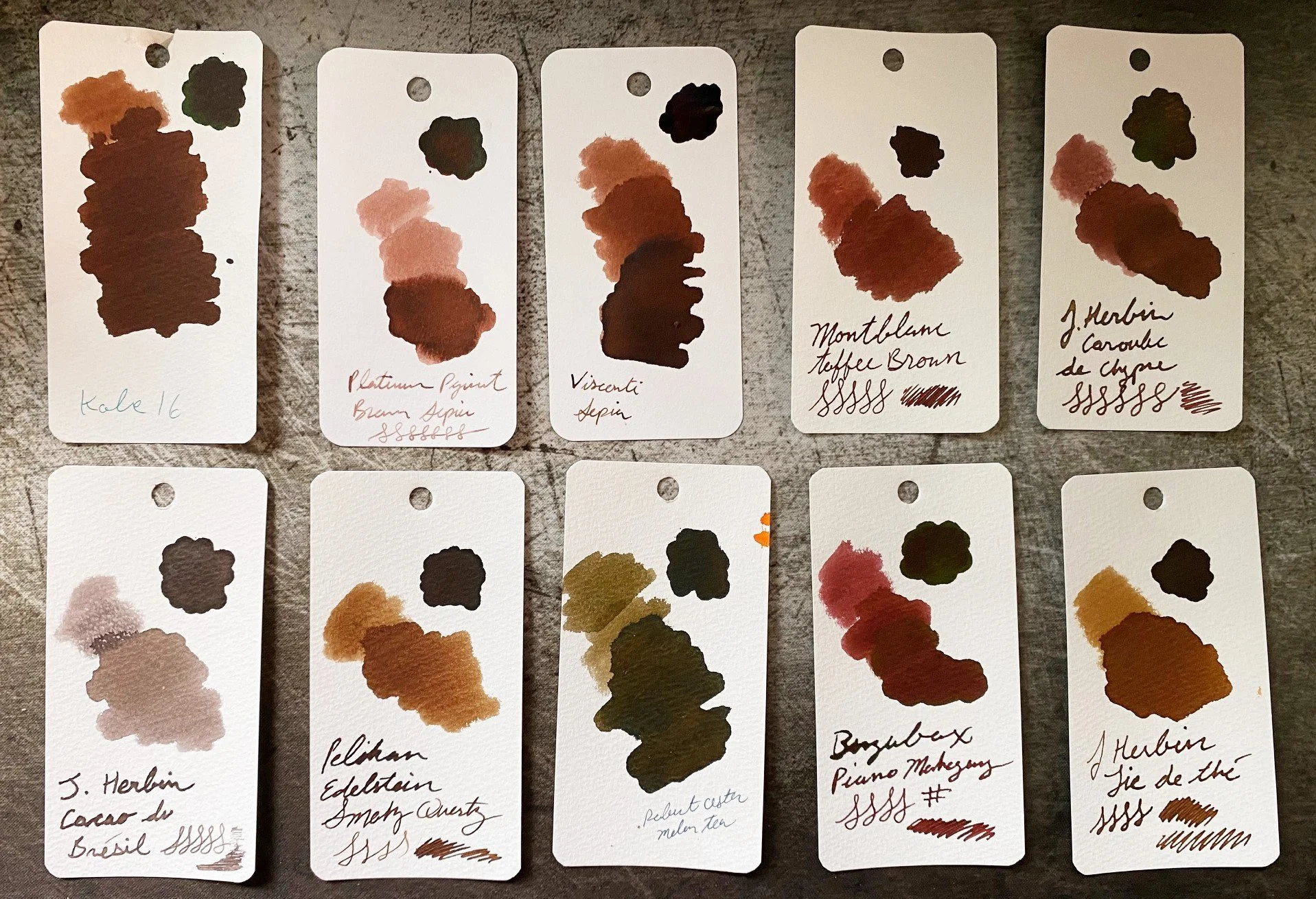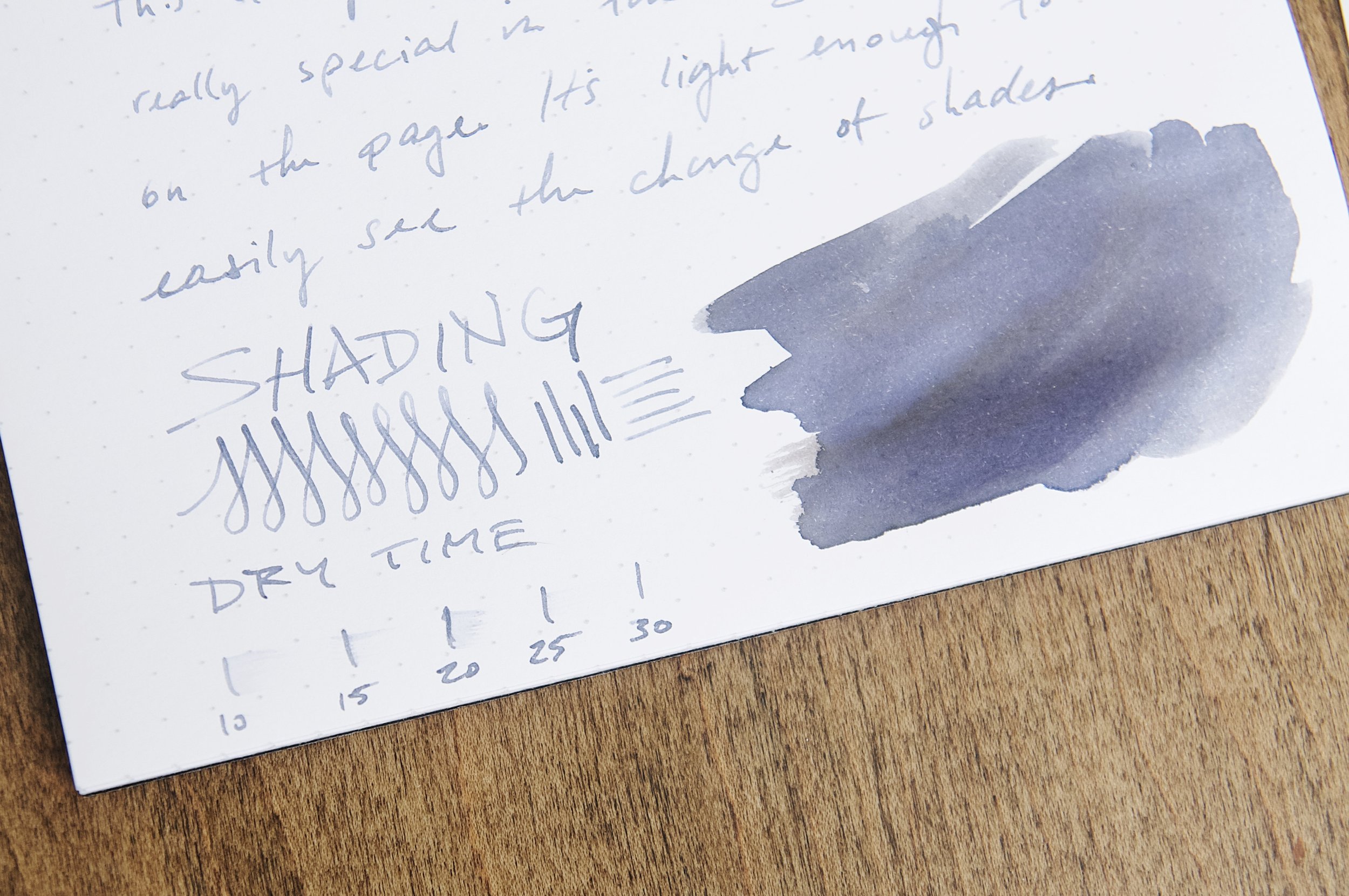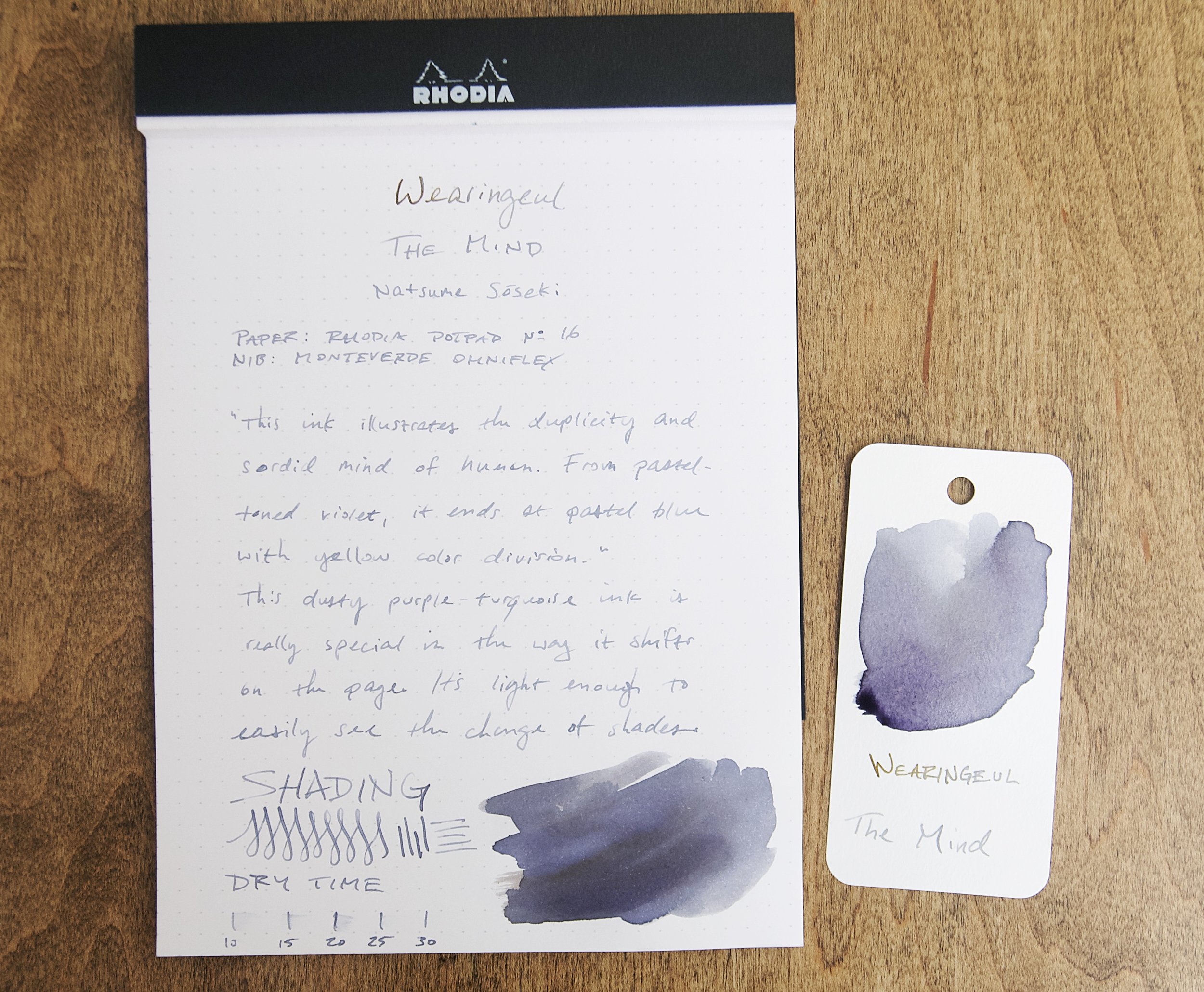(Sarah Read is an author, editor, yarn artist, and pen/paper/ink addict. You can find more about her at her website and on Twitter. And check out her latest book, Out of Water, now available where books are sold!)
Sepia is such a good staple ink color. Or colors, I should say, as "sepia" seems to be a catchall label for anything brownish. Visconti's Sepia is a classic brown. It's the color of milk chocolate and teddy bears, and while I would say that it's more standard brown that what I, personally, would consider sepia, it's a great ink.
The ink comes in a glass bottle with a unique, very Visconti V shape. The wide base makes it easy to fill from. You would have to try pretty hard to knock this bottle over. I do wonder if filling will be trickier when the ink becomes shallow, but there is a plastic insert in the bottle that is designed to prevent that challenge. I can't say how well it works, as I never seem to get to the bottom of any of my ink bottles.
While the color of this ink is very rich, it's otherwise fairly plain. There's almost no shading, no shimmer or sheen. It's a utilitarian brown. It also doesn't bleed or feather. It does have an unusually long dry time, which surprised me a little, as the ink feels dry when writing with it. It also has a little bit of water resistance. Where water drops were dabbed or wiped away, you can still see faint lines where the ink was. It wouldn't be enough to prevent catastrophe if a notebook was soaked, but it might survive a sprinkle.
Chromatography for this color started off fairly predictable--a warm brown separating into shades of other orangey-browns, but then it gave us a surprise pop of violet-blue at the end. Perhaps that's to cool the color down a bit, though it still reads warm to me on the page. Compared to similar browns, it most closely resembles Mont Blanc Toffee, though it goes much darker with heavier application.
This is a rather large bottle of ink, clocking in at 50ml, and it sells $35. I think that's slightly expensive, but color-wise, not a bad choice if your favorite flavor of sepia is chocolate.
(Vanness Pens provided this product at a discount to The Pen Addict for review purposes.)
Enjoy reading The Pen Addict? Then consider becoming a member to receive additional weekly content, giveaways, and discounts in The Pen Addict shop. Plus, you support me and the site directly, for which I am very grateful.
Membership starts at just $5/month, with a discounted annual option available. To find out more about membership click here and join us!





















